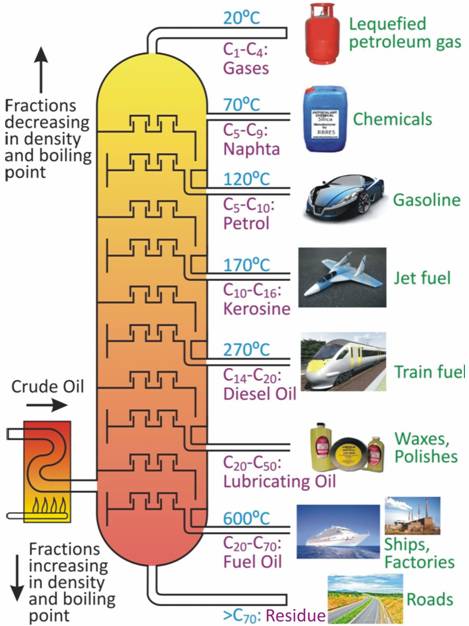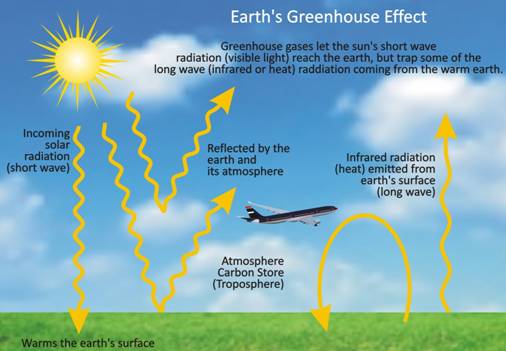Coal and petroleum Worksheet-3
A. Vapours of petroleum cool and condense at different points depending on their condensation temperature
B. Vapours of petroleum cool and condense at different points depending on their boiling points
C. Vapours of petroleum cool and condense at different points depending on their melting points
A. Above that of water B. Below water
C. Between water and sand D. Below sand
A. Extracting petroleum gas
B. Separation of various fractions of petroleum
C. Heating of coal
D. Sedimentation of fossil fuel
A. Middle zone of fractionating column
B. Topmost zone of the fractionating column
C. Bottom zone of the fractionating column
A. Cylinders B. Barriers
C. Pipes D. None of these
A. Greenhouse gas
B. Colourless, Tasteless, odourless odourless gas
C. Produced by complete combustion of fuel
D. Gas responsible for acid rain
A. Greenhouse gases let the sun’s short wave radiation reach the earth but trap some of the long wave radiation coming from the warm earth
B. Greenhouse gases trap most of energy that earth radiates out towards space
C. Greenhouse effect is responsible for global warming
D. All of these
A. Tripura B. Rajasthan
C. Maharashtra D. All of these
A. Incomplete combustion of fossil fuels
B. Complete combustion of fossil fuels
C. Combustion of plastics
D. Combustion of paper
A. Pollution control research association
B. Petroleum conservation Research association
C. Petroleum control research association
D. Petrol, coal reserve association
Answer:
Explanation: Refining of petroleum is done for separation of useful substances in oil refineries.
In this process, petroleum is heated to 400°C and introduced in a fractionating column, which is a tall, cylindrical structure fitted with horizontal trays.
As the vapours of petroleum rise inside the fractionating column, they cool and condense at different heights, depending on their boiling points, and are collected in different trays. Uncondensed hydrocarbons (petroleum gas) pass out of the column.

Explanation: Both oil and gas have a low specific gravity relative to water thus they will form layer above water.
Explanation:

Carbon dioxide is a green house gas which can lead to an increase in the global average temperature, which, in turn, can cause the melting of polar ice caps and glaciers, resulting in a rise in sea level and submerging of coastal areas.